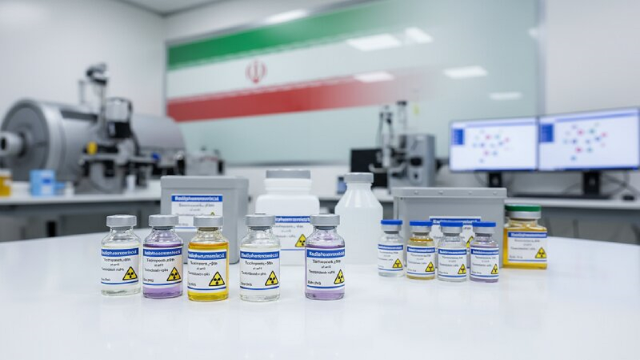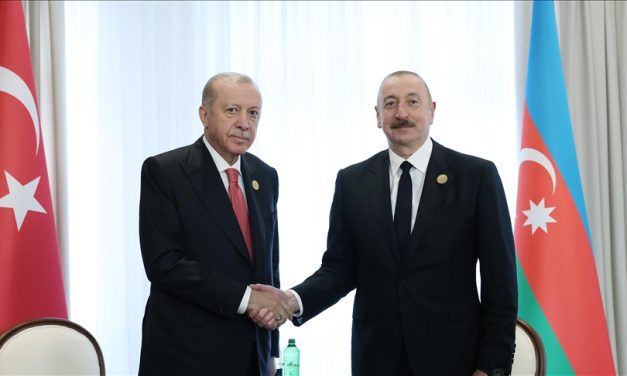Iran’s Perspective on Regional Markets
Dr. Kianoush Jahanpour, in an interview with the website of the Strategic Council on Foreign Relations, stated: “On this path, there are specific strategic and executive steps. First, investment must be targeted and based on comparative advantage and technological leapfrogging. Primarily, given Iran’s access to cheap petrochemical feedstocks, it should focus on producing pharmaceutical raw materials, including derivatives of benzene and toluene, as well as polymer compounds. This area is Iran’s inherent strength compared to competitors like India. Secondly, a strategic leap towards biosimilars and nanodrugs must be made. Instead of competing in the production of simple drugs, investing in biotech drugs like monoclonal antibodies and advanced formulations such as nanodrugs creates much higher added value. Given that Iran has a strong scientific infrastructure in this field, this action can turn our country into a regional pioneer.”
Dr. Jahanpour added: “Furthermore, non-competitive strategic advantages must be created. One such advantage is creating a pharmaceutical green corridor based on the speed advantage. While China sends drugs weeks later and mostly by ship, Iran can deliver them to Baghdad or Kabul by truck within 48 hours. Bilateral agreements should be concluded to establish a special customs lane allowing Iranian pharmaceutical shipments to pass through the border without stopping. In a sense, Iran should become the Amazon Prime of pharmaceuticals for the region.”
The former spokesperson of the Food and Drug Organization emphasized: “Another pillar in this regard is becoming the therapist for endemic diseases, which relies on the advantage of pharmaceutical intelligence and expertise. Instead of mass-producing generic and chemical drugs in competition with India and China, we must become the region’s specialist doctor based on the regional epidemiological profile. Investing in the production of drugs and diagnostic kits for endemic diseases like Leishmaniasis and Crimean-Congo Hemorrhagic Fever, which are often not a priority for global giants, turns Iran into an unrivaled reference for its neighbors.”
According to Dr. Jahanpour: “Finally, we must adopt the model of providing comprehensive health packages, which creates the advantage of strategic depth. We should never sell a box of pills; rather, we must offer a package that includes the drug, patient management software, electronic health records, localized treatment protocols, medical staff training, and public health systems. This approach connects and ties the customer to Iran’s health ecosystem, making replacement of our country by competitors costly and even impossible.”
The expert clarified: “To achieve these goals, upgrading infrastructure with an export-oriented perspective is essential. The first pillar is establishing specialized GMP (Good Manufacturing Practice) centers by founding or upgrading several export-oriented pharmaceutical industrial parks that meet the highest GMP standards and are designed from the outset for international inspections. The second pillar is investment in the cold chain. Given the future market for biological drugs, creating cold logistics corridors from production centers to key borders is a strategic advantage that a competitor like China lacks.”
Cooperation between Iran, Russia, and India for Joint Production
Dr. Jahanpour, regarding what model of technological and economic cooperation between Iran, Russia, and India could form for joint drug production, stated: “The formation of a trilateral alliance should be based on a model of a complementary and intertwined value network to create an integrated, sanctions-resistant supply chain based on the strategic advantages of each member. This is a coordinated orchestra, not three uncoordinated soloists. A prerequisite for this is a precise division of labor within the pharmaceutical power triangle. In this model, India, as the pharmacy of the world, is responsible for the mass production of drugs to global standards and for transferring knowledge to optimize production processes. On the other hand, Russia, relying on its historical standing in basic sciences and biotechnology, undertakes fundamental research, provides innovative drug ideas, and facilitates access to the Eurasian Union market. Iran, leveraging its cheap petrochemicals, supplies the intermediate materials and feedstocks needed by Indian pharmaceutical factories.”
The former advisory for information of the Food and Drug Organization stated: “Simultaneously, Iran takes over Russia’s fundamental research and converts it into high-value-added products like biosimilars, nanodrugs, and vaccines in its biotech and nanotech centers, acting as a strategic crossroads, a joint production, commercialization, and distribution center for the entire West Asia. This cooperation should take shape within the framework of a trilateral consortium with an independent legal personality, likely registered in a free trade zone.”
According to Dr. Jahanpour: “The economic solution for this model is a trilateral drug-energy-knowledge swap. This model eliminates dependence on the dollar and the Western banking system. For example, the cycle operates as follows: Iran exports petrochemical intermediates to India, India uses them to produce advanced drugs and sends them to Russia, and finally, Russia, in return, transfers the technical knowledge of a biotechnology platform or a new vaccine to Iran. This cycle creates a closed, efficient, and sanctions-resistant economic-technological ecosystem where value replaces currency.”
Sustainable Self-Sufficiency in the Pharmaceutical Industry
The expert also addressed the paths to achieving sustainable self-sufficiency in the pharmaceutical industry despite sanctions and technological shortages, saying: “Sustainable self-sufficiency under sanctions is not achieved through begging or temporary circumventions. Rather, we must turn the wall of sanctions into a ladder for leapfrogging through bold maneuvers. This requires a smart triple approach that activates indigenous technology, the external cooperation arm of international collaboration, and the economic heart of financing in a coordinated manner.”
He stated: “The first path is the development of indigenous technology and knowledge hunting. This is achieved through smart reverse engineering, i.e., focusing on drugs whose patents have recently expired and whose production involves high technological complexity. Alongside this, the reverse migration grant maneuver must be executed. Instead of begging for the permanent return of elites, ‘rent’ them for specific projects. Offer a prominent Iranian scientist abroad double their annual salary for six months with a specific output, solely to set up one high-tech production line and train the domestic team. They come, transfer the tacit knowledge, and return. With this method, we have hunted the knowledge, not the individual.”
Dr. Jahanpour continued: “The second path is scientific cooperation, or so-called smart science diplomacy. We must turn to focused knowledge transfer. Instead of general memoranda of understanding, identify a specific laboratory in China or India that specializes in a key technology and send small, focused teams of our researchers to learn that specific technique. This is a targeted operation to acquire ‘magic’ techniques. Also, attracting post-docs and visiting professors by offering attractive grants to prominent researchers from aligned countries like Russia, India, and Brazil injects state-of-the-art technical knowledge into the country directly and purposefully.”
The expert added: “The third proposed path is activating the domestic ecosystem through special economic solutions. Foremost among them is the maneuver of strategic government purchase guarantees. The government must guarantee the purchase of a high-tech consumable material for five years from the first knowledge-based company to develop its production technology, even at a higher initial price. This guarantee eliminates the biggest risk for the Iranian private sector, which is the lack of a market, and forms a queue of investors to enter this field.”
Dr. Jahanpour finally noted: “Alongside this, the Elite Incentive Equity Fund is another solution whereby large pharmaceutical companies, with government support, allocate a portion of their shares to this fund to be awarded as a reward to elites who turn national projects into products. This model ties the long-term interests of elites to the success of the domestic industry and creates a powerful incentive to counter brain drain.”










0 Comments